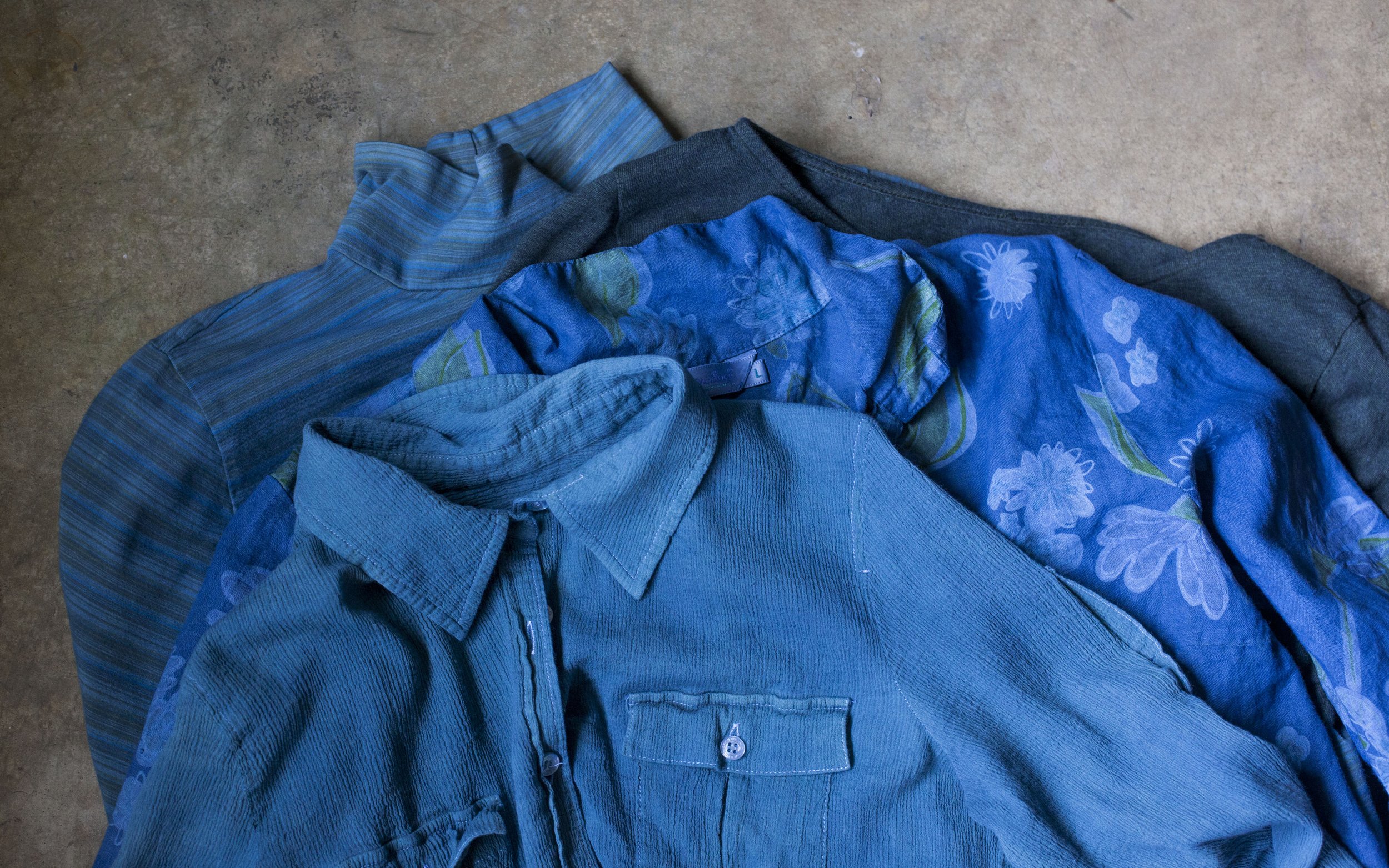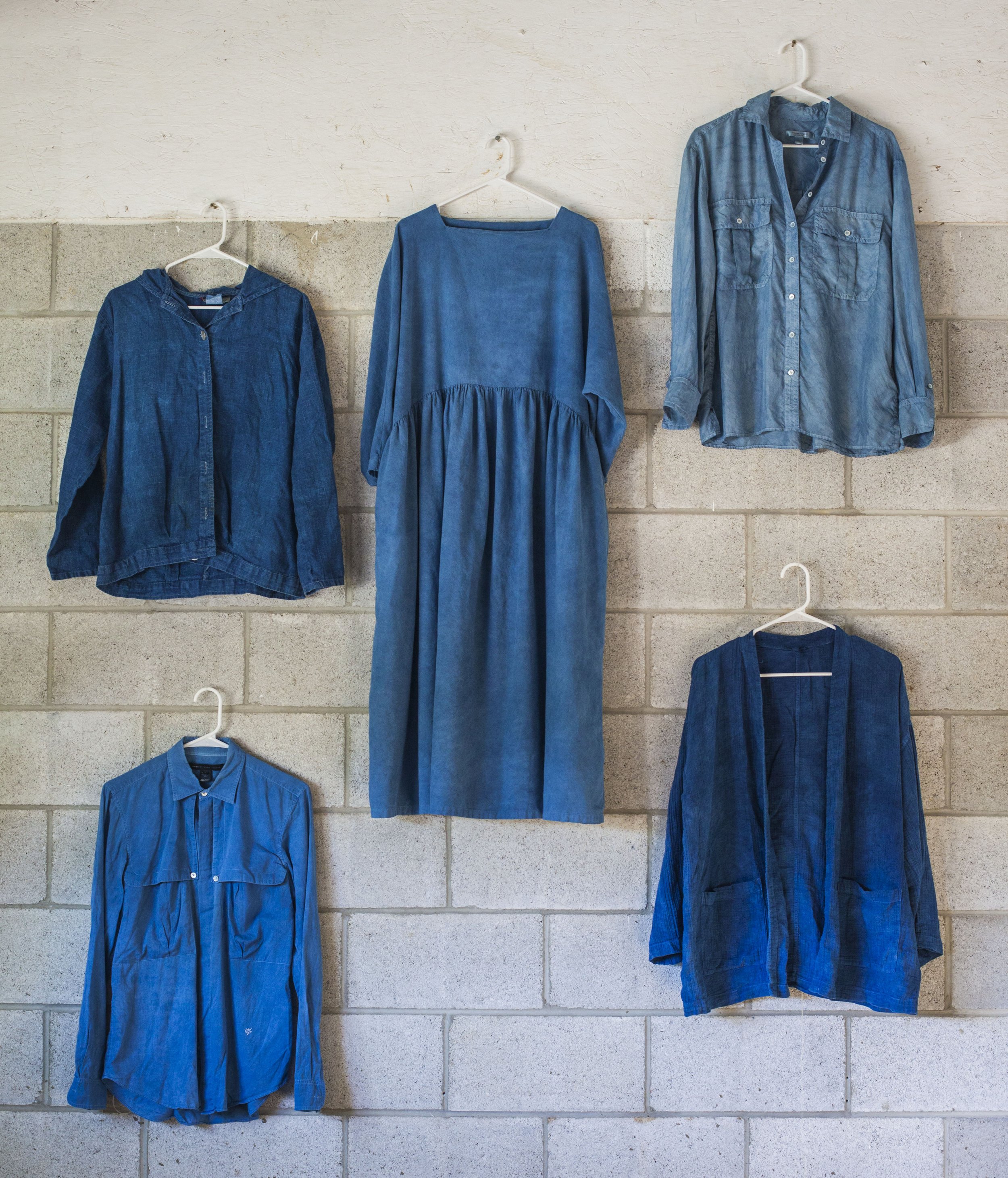What do garments weigh?
It has come to our attention that not everyone’s home is outfitted with the bells and whistles of Green Matters, such as 100 gallon steel kettles, three indigo vats, multiple industrial dye machines, drying racks that hang from the ceiling, and of three scales to weigh by grams, ounces, and pounds.
You might be surprised to hear that the weigh table is the bread and butter of natural dye production.
All of our recipes are based on the weight of fiber - or WOF - being dyed. If you’ve taken a color development workshop with us you are familiar with this term. WOF is what determines how much mordant and dye we use when we run our monthly dye lots - an 8lb dye lot will need less dye than a 10lb dye lot, for example. In the same vein, a large quilt will require more resources to dye than a lightweight t-shirt.
Through our Community Indigo Vat and Dye Lot of the Month services, we can overdye your garments for $50 for indigo or $35 for the dye lot of the month. This flat rate covers the cost of a garment up to 1.25lb.
If you’re not familiar with what garments typically weigh:
Generally speaking: t shirts, blouses, tank tops, and most crew necks are less than 1.25lb.
Larger items such as overalls, jumpsuits, coats, bedding (such as sheet sets or quilts) are typically over this amount. For items over the 1.25lb flat rate, we bill per pound rather than per garment.
Not sure whether your garment makes the cut off?
Let’s take a look at some common weights for garments:
T shirt: 0.25 -0.4 lbs
Collered Button up: 0.6lb-0.7lbs
Denim Jeans: 1.2 - 1.8lb
Jumpsuit: 1.8-2lb
Bedding set: 5lb
Queen size quilt: 4-6lb
Of course the above numbers are estimates based on a few garments we had in the studio today, and are not universally true for all t shirts, jeans, and quilts. Linen garments typically weigh less than cotton garments, although the weight of the knit or woven structure also has an impact on weight. Oh, the endless variations!


